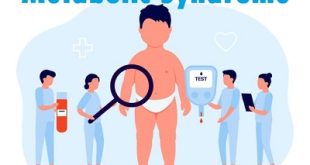Definition
Insulin resistance is when cells in your muscles, body fat and liver start resisting or ignoring the signal that the hormone insulin is trying to send out which is to grab glucose out of the bloodstream and put it into our cells. Glucose, also known as blood sugar, is the body’s main source of fuel. We get glucose from grains, fruit, vegetables, dairy products, and drinks that bring break down into carbohydrates.
Epidemiology
A quarter of the world’s adults are considered to have the metabolic syndrome.Worldwide, early studies indicated a more significant association between insulin resistance and the various components of the metabolic syndrome in white persons than in members of other ethnic groups. Prevalence rates of insulin resistance syndrome reported for white populations ranged from 3-16%; a rate of less than 2% was reported among Japanese populations.
Subsequent findings, however, have suggested a similar relationship in many minority populations. Nevertheless, available systematic data apply mainly to white populations. Marked variations exist in methodologies and diagnostic criteria.
Insulin resistance risk factors
Some of the risk factors for prediabetes and diabetes are also risk factors for heart disease and other cardiovascular and cerebrovascular problems such as stroke.
As a result, the fields of cardiology, endocrinology, and public health have recently begun to overlap; they consider a “constellation of risk factors” for diabetes and heart disease.
Because some of the risk factors are also avoidable – and because obesity, in particular, has become more widespread – there has been an increased focus on lifestyle measures that can help reduce the chances of disease.
The following are all risk factors for insulin resistance, prediabetes, and diabetes, and some can be modified by lifestyle changes or medical help:
- Overweight and obesity (primarily abdominal obesity)
- Sedentary lifestyle – not engaging in physical activity regularly
- Smoking
- Sleep issues
The United States Department of Health and Human Services recommend that all people who are overweight and over 45 years of age should be tested for diabetes.
Causes of Insulin resistance
There are several causes for insulin resistance, and genetic factors (inherited component) are usually significant. Some medications can contribute to insulin resistance. In addition, insulin resistance is often seen with the following conditions:
The metabolic syndrome is a group of conditions involving excess weight (particularly around the waist), high blood pressure, and elevated levels of cholesterol and triglycerides in the blood.
- Obesity
- Pregnancy
- Infection or severe illness
- Stress
- Inactivity and excess weight
- During steroid use
Other causes of or factors that may worsen insulin resistance can include:
- Taking certain medications
- Older age
- Sleep problems (especially sleep apnea)
- Cigarette smoking
Metabolism of glucose is important as too high and too low concentrations can cause serious complications
Symptoms of Insulin resistance
Initially, insulin resistance presents no symptoms. The symptoms only start to appear once it leads to secondary effects such as higher blood sugar levels. When this happens, the symptoms may include:
- Lethargy (tiredness)
- Hunger
- Difficulty concentrating (brain fog)
Other signs that often appear in people with insulin resistance include:
- Weight gain around the middle (belly fat)
- High blood pressure
- High cholesterol levels
If insulin resistance develops into prediabetes or type 2 diabetes, the symptoms will include increased blood glucose levels and more of the classic symptoms of type 2 diabetes.
Diagnosis and test
A number of tests can be used to diagnose prediabetes and diabetes:
A1C test – measures average blood sugar over the previous 2-3 months
Fasting blood glucose test – glucose levels are checked after not eating or drinking for 8 hours
Random blood draws – blood glucose levels checked at any time of the day
Treatment and medications
Lifestyle changes are important in the treatment of insulin resistance, namely, reducing sugar and carbohydrate intake. Medical treatment includes a number of different medications to complement lifestyle changes.
Insulin Resistance Medication
Metformin (Glucophage) is a medication used to treat diabetes. It has two mechanisms of action that help to control blood glucose levels. It prevents the liver from releasing glucose into the blood, and it increases the sensitivity of muscle and fat cells to insulin so that they remove more glucose from the blood. Because of these actions, metformin effectively reduces blood insulin levels. Metformin is a reasonably safe medication when used as indicated. Although there are gastrointestinal side effects with metformin, the drug usually is well-tolerated.
Acarbose (Precose) is another medication that can be used for treatment of insulin resistance. It works in the intestines to slow the absorption of sugars, and this effect can reduce the need for insulin after meals. The Study to Prevent Non-insulin Dependent Diabetes Mellitus trial (also known as the STOP NIDDM Trial), treated individuals with insulin resistance with acarbose and found that that acarbose reduced the development of diabetes by 25%.
Simple Lifestyle Changes Make a Difference
- If you already have insulin resistance, you can take actions that will help your health.
- Go for at least 30 minutes a day of moderate activity (like brisk walking) 5 or more days a week. If you’re not active now, work up to that.
- Get to a healthy weight. If you’re not sure what you should weigh or how to reach a weight loss goal, ask your doctor. You may also want to talk with a nutritionist and a certified personal trainer.
- Eat a healthy diet. Think fruits, vegetables, whole grains, nuts, beans, fish, legumes, and other lean protein.
Insulin resistance prevention
- While the risk factors for insulin resistance and type 2 diabetes are not always modifiable – our family history and genetic makeup, for example – there are proven ways to reduce the chances of becoming insulin resistant and developing type 2 diabetes. Obesity is a particular risk factor.
- Some of the same factors are also important in preventing heart disease and stroke.
- For ideas about diabetes prevention, the AHA simply say: “Lose weight and get active.”
- Prediabetes is only a warning. Landmark studies such as the Diabetes Prevention Program show that lifestyle changes can reduce the risk of progressing from prediabetes to diabetes by over 58 percent.
 Diseases Treatments Dictionary This is complete solution to read all diseases treatments Which covers Prevention, Causes, Symptoms, Medical Terms, Drugs, Prescription, Natural Remedies with cures and Treatments. Most of the common diseases were listed in names, split with categories.
Diseases Treatments Dictionary This is complete solution to read all diseases treatments Which covers Prevention, Causes, Symptoms, Medical Terms, Drugs, Prescription, Natural Remedies with cures and Treatments. Most of the common diseases were listed in names, split with categories.








what is the cure for diabetics
Continous insulin treatment and proper diet for diabetes can be a cure.
Dear all
My child age is 3.6yrs but till now he didn’t sit only sleep condition and also don’t say anything word. And remain hearing, sense, seeing all is fine. Please help me.
First consult with paediatric specialist.
also diabetic persons all three types can eat glocous whid diet and exercise and needed medicine
Please consult a doctor and a dietitian.
does the treatment also apply to insulin resistance when using exogenous insulin via injection ?
I had 3 minor operations on my foot in 2017. My right big toe has been amputated and I also had operation underneath my foot and also the top part too. My big toe and the top part of my foot has been healed well but only the bottom part about an inch is left to be healed. It’s over a year now and I’m just dressing it with honey every day. Can you please help me??
please consult a doctor